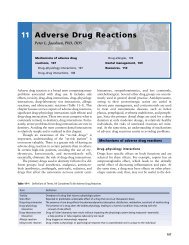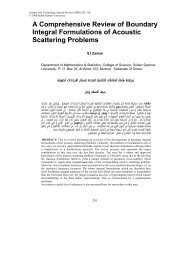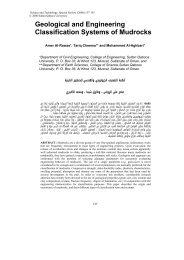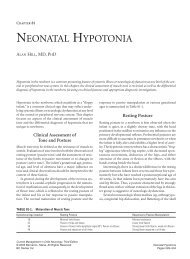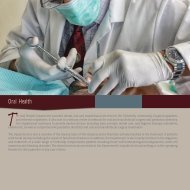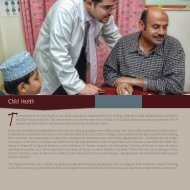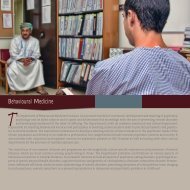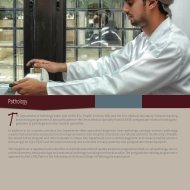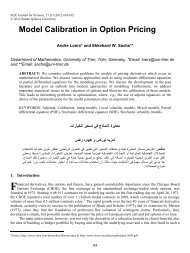Male Reproductive Toxicity - SQU Home
Male Reproductive Toxicity - SQU Home
Male Reproductive Toxicity - SQU Home
Create successful ePaper yourself
Turn your PDF publications into a flip-book with our unique Google optimized e-Paper software.
TABLE 11Clinical/Case Studies of <strong>Male</strong> <strong>Reproductive</strong> Effects withPositive Association with ExposureType of Study Type of Exposure Effect Ref.Cluster DBCP Semen, endocrine 181Case report Kepone Semen 93Medical monitor Lead Semen 182Case report Methylene chloride Semen 183Case report Lead Semen 92Accident Bromine vapor Semen 76Accident Radiation Semen, endocrine 77therapy. His sperm count increased as his blood levels decreased, and he subsequently fatheredanother child after the level of lead decreased below 30 mg/dl. Similarly, after men exposedto high levels of kepone in the work environment were treated with cholestyramine to offsetthe toxic action of kepone, their sperm count and sperm motility increased accordingly. 93Work-related accidents may provide case study data on high-level exposures. These inturn may indicate the parameters to be studied at lower exposures.3 SURVEILLANCE OF MALE REPRODUCTIONA surveillance strategy for evaluating men working with known male reproductive toxicantswas proposed and conducted by a team from the University of California; 94 however,this program had many problems and was eventually discontinued. 95 While this first attemptwas discouraging, chemicals such as lead and ethylene glycol ethers remain in the U.S.workplace, posing a hazard to the reproductive health of the male worker. A surveillanceprogram is required to monitor those working with these and other occupational toxicants.3.1 SUSCEPTIBILITY OF SUBGROUPSThere is a concern that there may be a subgroup of individuals that may be moresusceptible to a toxicant than others in the population. While for male reproductive toxicantsin humans this has not been tested, there are some indications that it may in fact happen insome cases. Chapin et al. 96 have shown that different strains of mice respond differently dothe same toxicant. Their data indicate that a strain of mice known to be “poor breeders”were more sensitive to the toxicant 2-methoxyethanol than strains of “good breeders”. Asimilar response was noted by Welch et al., 97 who reported on a study in which workers wereexposed to a related compound, 2-ethoxyethanol. In this human study, the exposed workershad a median sperm count similar to the unexposed comparison group; however, when thedistribution of sperm counts was evaluated, it appeared that the number of sperm of menwith low sperm counts was much lower. This suggested that a man with a lower sperm countsuffered a severe decrement compared to others in the population with exposure.3.2 DECLINING SPERM COUNTSMuch has been written about declining male fecundity in recent years. 68,98,99 The reporteddecline in sperm numbers has received the most attention. Such reports are not necessarilynew, as this controversy has been debated before. 63-67 What appears different is that the© 1999 by CRC Press LLC





